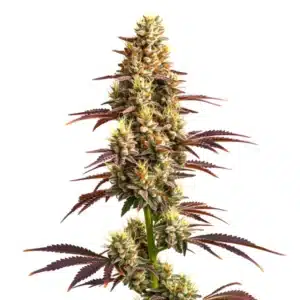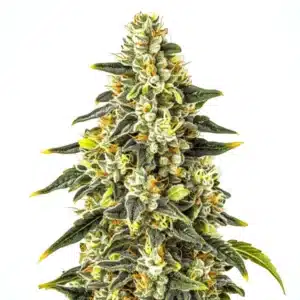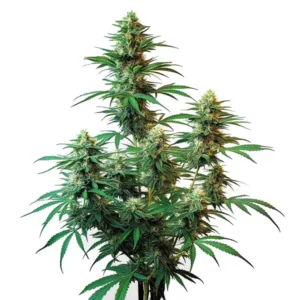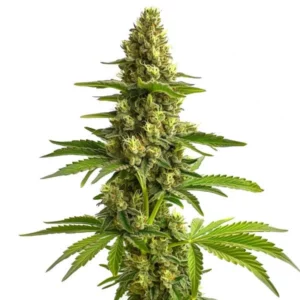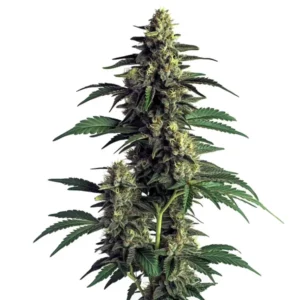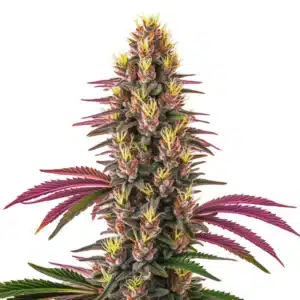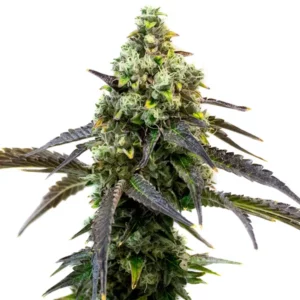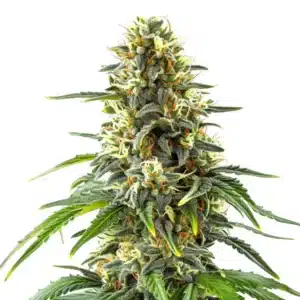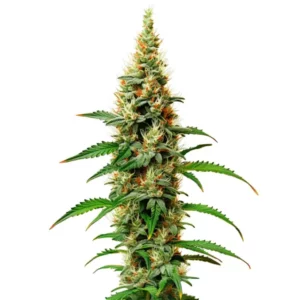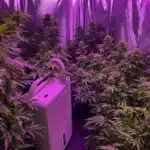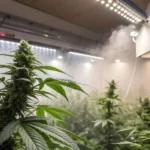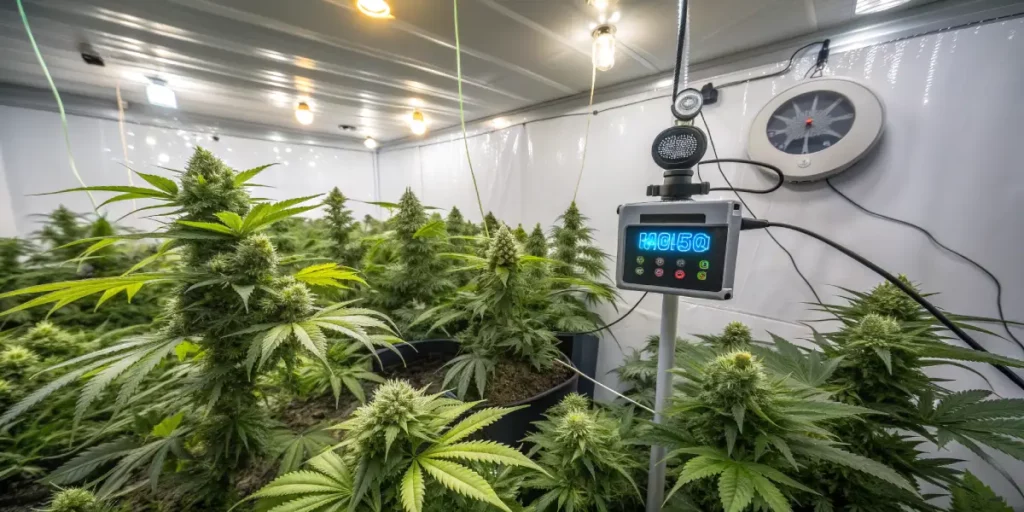
Best Humidity for Flowering Autoflowers: A Grower’s Guide
Cultivating autoflowering cannabis strains can be one of the most rewarding experiences for any grower. These compact, fast-growing plants don’t rely on light cycles to start flowering, making them a popular choice for beginners and seasoned cultivators alike. However, one of the most overlooked yet critical aspects of successful cultivation is achieving the best humidity for flowering autoflowers.
Humidity is not just a number to glance at; it’s a cornerstone of plant health and yield quality. The air’s moisture levels play a vital role in how well your autoflowers develop, especially during the flowering stage. Without proper humidity management, you might face a host of problems, from stunted growth to mold infestations. To grow healthy, resinous buds, understanding and maintaining the best humidity for flowering autoflowers is essential.
Recommended Strains
Super Boof
|
|
THC | 25% - 28% (High) |
|
|
Type | Feminized |
|
|
Yield | Low |
|
|
Phenotype | 60% Indica / 40% Sativa |
Super Boof Auto
|
|
THC | 25% - 28% (High) |
|
|
Type | Autoflowering |
|
|
Yield | Low |
|
|
Phenotype | 60% Indica / 40% Sativa |
Why Humidity is Key for Healthy Autoflowers
Humidity levels can make or break your cannabis cultivation efforts. For autoflowers, which are known for their resilience and speed, maintaining the right humidity throughout their lifecycle is especially critical. These plants designed to flower regardless of light cycles have specific needs at each growth stage. Failing to address these can hinder their performance and reduce the quality of your final harvest.
One of the reasons humidity matters so much is its effect on the plant’s transpiration process. Transpiration is how plants absorb water and nutrients through their roots and release water vapor through their leaves. When humidity is too high, this process slows down, leaving your autoflowers at risk of nutrient deficiencies. On the other hand, overly dry air can stress the plants, leading to wilting, leaf curling, and subpar bud development.
Finding the sweet spot for humidity allows your autoflowers to focus their energy on producing dense, aromatic buds. The flowering stage is especially sensitive to environmental changes, so knowing the best humidity for flowering autoflowers can help you avoid costly mistakes.
Promos & Deals
Humidity Through the Growth Phases
Autoflowers go through several stages in their lifecycle: seedling, vegetative, and flowering. Each phase has its own ideal humidity range. Adjusting humidity as your plants grow ensures they remain comfortable and productive.
Seedling Phase: High Humidity for Small Beginnings
During the seedling stage, autoflowers thrive in a humid environment with a relative humidity (RH) of 65-70%. At this early stage, their root systems are not fully developed, so they rely on moisture absorbed through their leaves to sustain growth. A humid atmosphere prevents dehydration and encourages strong, healthy seedlings.
Creating the right environment can be as simple as using a humidity dome or spraying water to increase moisture levels. Growers often place a hygrometer near their seedlings to monitor humidity accurately. Maintaining consistency is key, as fluctuations can stress the delicate young plants.
Vegetative Stage: Gradual Adjustment for Vigorous Growth
As your autoflowers transition to the vegetative stage, their roots become more robust, and they start absorbing more water from the soil. At this point, reduce the RH to around 55-65%. This adjustment mimics natural conditions and prepares the plants for the flowering phase.
Proper ventilation becomes crucial during the vegetative stage. Fans and exhaust systems help maintain airflow, preventing excess moisture from accumulating. Healthy air circulation also reduces the risk of pests and fungal diseases, which thrive in stagnant, humid environments.
Flowering Stage: Precision Matters
The flowering stage is when your autoflowers focus all their energy on bud production. This phase demands the most attention to humidity control. The best humidity for flowering autoflowers falls between 40-50%. Keeping humidity in this range minimizes the risk of mold and bud rot while ensuring the plants remain hydrated enough to develop dense, resinous flowers.
Monitoring humidity levels daily is crucial during this phase. Tools like digital hygrometers with alarms can alert you to any significant changes. Even small deviations can impact the quality of your harvest, so consistency is paramount.
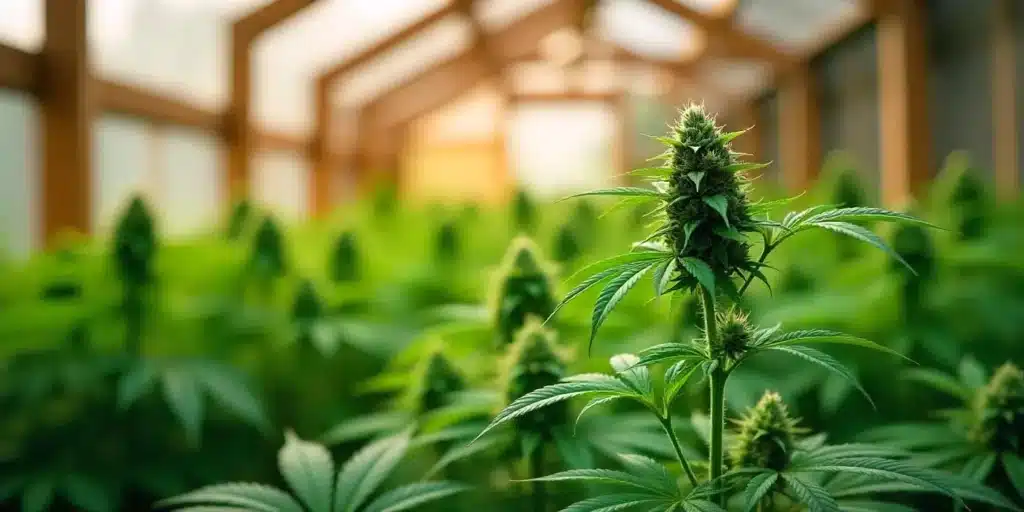
Challenges in Humidity Management
Maintaining the ideal humidity for flowering autoflowers is easier said than done. Various factors, such as grow room size, temperature, and watering practices, influence RH levels. Understanding these variables can help you create a stable environment for your plants.
The Role of Grow Space
The size of your grow space significantly impacts humidity control. Small grow tents can become overly humid without adequate ventilation, while larger rooms may require additional equipment to maintain optimal conditions. Installing an exhaust fan or using a dehumidifier can help balance humidity levels in any setup.
Temperature and Humidity Relationship
Temperature and humidity are interconnected. Warmer air holds more moisture, so as temperatures rise, RH levels can fluctuate. During the flowering phase, aim for temperatures between 68-77°F (20-25°C). Pairing this temperature range with the best humidity for flowering autoflowers creates an ideal environment for bud development.
Watering Practices
Overwatering is a common mistake that can raise humidity levels in your grow space. Excess water in the soil evaporates, increasing moisture in the air. To avoid this, adopt a balanced watering schedule and ensure proper drainage. Watering in the morning allows excess moisture to evaporate during the day, preventing nighttime spikes in RH.
Tools for Precision Control
Investing in the right tools can make all the difference when managing humidity. Growers have access to a variety of equipment designed to maintain the best humidity for flowering autoflowers.
Hygrometers and Humidistats
A good hygrometer is essential for tracking RH levels. Some models come with built-in humidistats, which automatically adjust equipment like dehumidifiers or humidifiers to maintain your desired humidity range.
Dehumidifiers and Humidifiers
Dehumidifiers are invaluable during the flowering stage, especially in humid climates. They remove excess moisture, reducing the risk of mold and bud rot. Conversely, humidifiers add moisture to the air, which is useful during dry seasons or in arid regions.
Fans and Ventilation Systems
Fans improve air circulation, preventing pockets of stagnant, humid air from forming around your plants. Oscillating fans are particularly effective, as they distribute air evenly throughout the grow space. Combined with a proper ventilation system, fans help maintain consistent humidity levels.
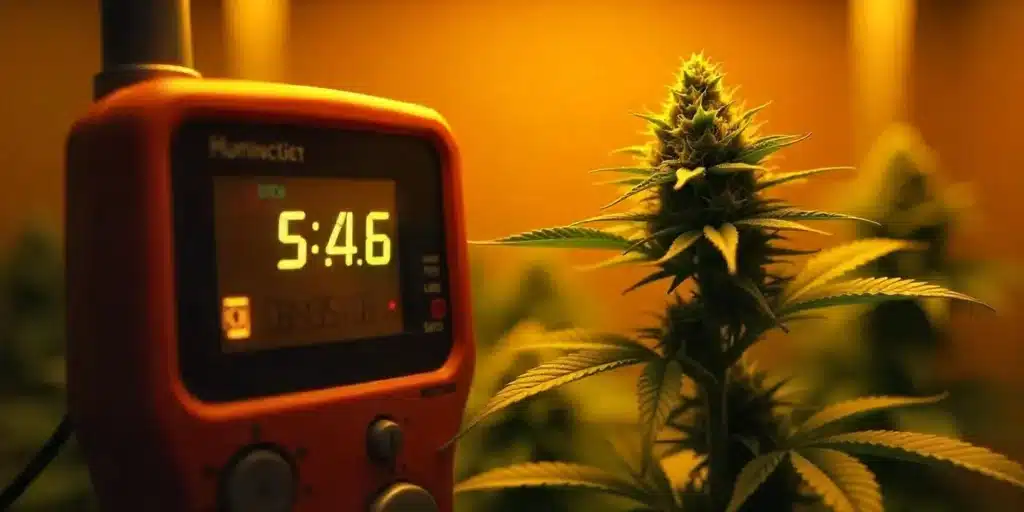
Recognizing Humidity Problems
Even with the best intentions, humidity issues can arise. Knowing the signs of improper RH levels can help you address problems before they escalate.
High Humidity Symptoms
- Mold and mildew on leaves or buds
- Bud rot, characterized by browning and decay inside flowers
- Weak or elongated stems due to poor transpiration
Low Humidity Symptoms
- Leaf curling or wilting
- Stunted bud development
- Increased susceptibility to pests like spider mites
Addressing these issues promptly is critical to preserving the health and yield of your autoflowers.
Pro Tips for Humidity Management
Use Silica Gel or Desiccants
Silica gel packs or other desiccants can be a simple way to control humidity in small grow spaces. These materials absorb excess moisture, helping maintain a stable environment.
Optimize Canopy Density
Pruning and trimming during the vegetative stage can improve airflow around your plants. A less dense canopy reduces the risk of trapped moisture, ensuring the best humidity for flowering autoflowers.
Monitor Regularly
Frequent monitoring is key to success. Check RH levels daily, and adjust your equipment as needed. Investing in a monitoring system with alerts can save you from unexpected spikes or drops.
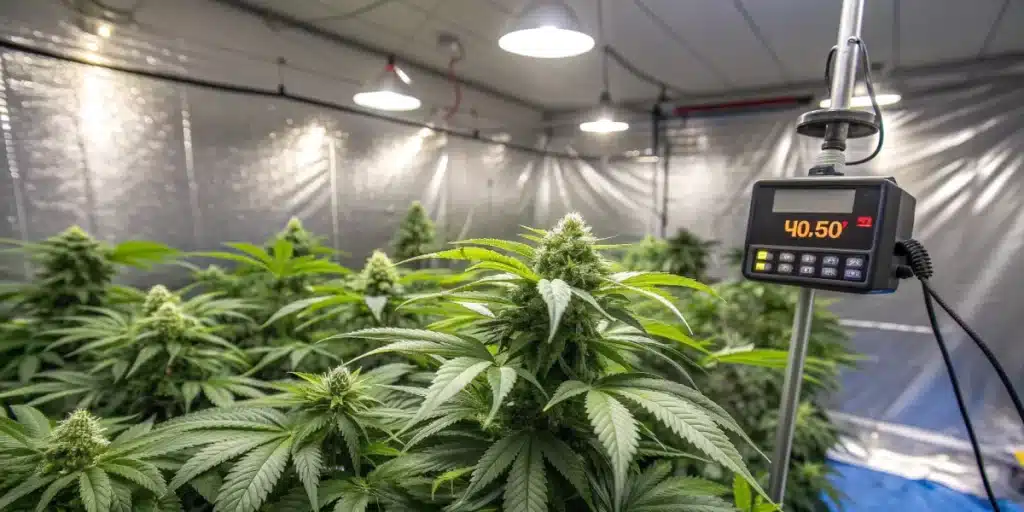
The Impact of Strain Genetics on Humidity Needs
Cannabis strains have evolved in vastly different climates, and these genetic differences play a significant role in how they respond to humidity. Indica-dominant strains, for example, originate from cooler, drier regions such as the Hindu Kush mountains. These plants often prefer lower humidity levels, especially during flowering, as they are more prone to mold in moist conditions. On the other hand, sativa-dominant strains hail from tropical climates where higher humidity is the norm. These plants tend to handle moisture better, making them more forgiving in humid grow environments.
Hybrids, which combine characteristics of both indicas and sativas, may display a mix of humidity preferences. It’s important to research the genetics of the specific autoflower strain you’re growing to tailor your humidity control. Growers who understand their strain’s genetic background can avoid common pitfalls and create the ideal environment for maximum yield and quality.
Regional Challenges for Humidity Management
The climate in your region can present unique challenges when trying to maintain optimal humidity for flowering autoflowers. Growers in coastal areas often struggle with high ambient humidity. This can lead to mold and mildew issues during the flowering stage if not managed properly. Using dehumidifiers and ensuring excellent ventilation are critical steps for those in these regions. Additionally, keeping a close eye on nighttime humidity spikes, which are common in coastal climates, is essential to prevent bud rot.
In contrast, growers in arid regions, such as deserts, face the opposite problem: low humidity. This can cause plants to lose moisture too quickly, leading to stress and suboptimal growth. Humidifiers and techniques like misting or placing bowls of water near plants can help combat dryness. Regardless of your location, understanding the specific challenges of your regional climate allows you to make adjustments that keep your autoflowers thriving.
How Lighting Affects Humidity
Lighting systems do more than just provide energy for your plants; they also influence the humidity levels in your grow space. High-pressure sodium (HPS) and metal halide lights, for example, produce significant heat. This heat increases evaporation, which can lower relative humidity levels. While this can be beneficial in humid environments, it may require growers in drier climates to add moisture back into the air.
LED lights, on the other hand, run cooler and have a smaller impact on humidity. They are often preferred by growers looking to maintain more stable environmental conditions. However, the reduced heat also means that LED setups may require additional ventilation or heating systems to balance humidity and temperature. The type of lighting you choose and how you position it can have a significant impact on maintaining the best humidity for flowering autoflowers.
DIY Tips for Humidity Management
Managing humidity doesn’t have to involve expensive equipment. There are plenty of do-it-yourself solutions that can help you maintain optimal conditions. To increase humidity in a dry grow space, try placing bowls of water around your plants. The water will gradually evaporate, raising the moisture level in the air. Another simple trick is to hang wet towels or sponges near your plants, which can also boost humidity effectively.
For reducing humidity, silica gel packs or containers of dry rice can be a cost-effective option. These materials absorb excess moisture and are easy to replace. Improving air circulation by repositioning fans or adding extra ventilation is another practical way to manage humidity without breaking the bank. With a little creativity, you can create a stable environment for your autoflowers even on a budget.
FAQs
What happens if humidity is too high during flowering?
Excess humidity during the flowering stage can lead to mold, mildew, and bud rot. These issues can ruin your harvest by damaging the flowers, making them unsmokable. Keeping RH between 40-50% minimizes these risks.
Can low humidity stress autoflowers?
Yes, low humidity can cause stress, leading to wilting, leaf curling, and slower growth. Plants in overly dry environments may also become more susceptible to pests.
How can I quickly reduce humidity in my grow space?
The fastest way to lower humidity is by using a dehumidifier. Improving ventilation, increasing airflow with fans, and lowering the temperature are also effective methods.
Are there specific strains better suited for humid climates?
Yes, sativa-dominant strains and hybrids with tropical genetics are often more tolerant of high humidity compared to indica-dominant strains.
Do autoflowers need different humidity than photoperiod strains?
While the general humidity ranges are similar, autoflowers’ rapid lifecycle means they may transition through growth stages faster, requiring quicker adjustments to RH levels.



